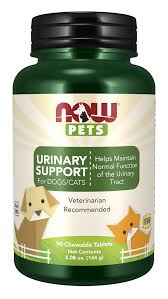Choosing the right pet food for your pet is one of the most important decisions you’ll make as a pet owner. With the vast array of options available, from grain-free to raw diets, it can be overwhelming to determine what’s best for your furry friend. Proper pet nutrition is key to maintaining your pet’s health, energy levels, and longevity. In this blog, we’ll explore the different types of pet food, the benefits of each, and how to choose the best option based on your pet’s specific needs.
1. Understanding Your Pet’s Nutritional Needs
Just like humans, pets have unique dietary requirements based on their age, breed, size, and health condition. Meeting these needs is crucial for your pet’s overall well-being.
Understanding Pet Nutrition with Age and Life Stage:
- Puppies and Kittens: Young pets need high-calorie diets rich in proteins and fats to support their rapid growth and development. Look for foods labeled as “growth” or “development” to ensure they meet the nutritional needs of your growing pet.
- Adult Pets: Once your pet reaches adulthood, their nutritional needs change. They require a balanced diet that maintains their health without leading to obesity. Foods labeled for “maintenance” are typically suitable for adult pets.
- Senior Pets: Older pets may require diets lower in calories but higher in fiber and nutrients like glucosamine to support joint health. Look for “senior” or “mature” labels when choosing food for aging pets.

Breed and Size Considerations:
- Small Breeds: Small breeds often have faster metabolisms and may require more calorie-dense food. Additionally, kibble size should be appropriate for their smaller mouths.
- Large Breeds: Large and giant breeds are prone to specific health issues like hip dysplasia. Diets formulated for large breeds often include joint-supporting nutrients and controlled calcium levels to support bone health.
Health Conditions:
- Allergies: If your pet has food allergies, it’s essential to choose a hypoallergenic diet that avoids common allergens like chicken, beef, or grains.
- Obesity: For overweight pets, weight management formulas with lower calorie content and added fiber can help manage their weight.
- Chronic Conditions: Pets with chronic conditions like diabetes or kidney disease may require special veterinary diets tailored to their specific health needs.
2. Exploring Different Types of Pet Food
The pet food market offers a wide range of options, each with its own set of benefits. Understanding these options will help you make an informed decision.
Dry Food (Kibble):
- Benefits: Dry food is convenient, has a long shelf life, and is often more affordable than other types. It also helps clean your pet’s teeth by reducing plaque and tartar buildup.
- Considerations: Not all kibble is created equal. Look for high-quality brands that list whole meats as the first ingredient and avoid those with fillers like corn, soy, or by-products.
Wet Food (Canned):
- Benefits: Wet food is higher in moisture content, making it a good option for pets that need extra hydration, such as cats or pets with urinary issues. It’s also more palatable, which can be helpful for picky eaters.
- Considerations: Wet food is generally more expensive and has a shorter shelf life once opened. It’s important to store it properly to avoid spoilage.
Raw Food:
- Benefits: Raw diets aim to mimic a pet’s natural diet in the wild, consisting of raw meat, bones, and organs. Advocates claim that raw feeding leads to healthier skin, shinier coats, and better digestion.
- Considerations: Raw feeding requires careful handling to avoid contamination and ensure nutritional balance. It’s also more time-consuming and can be expensive.
Grain-Free Diets:
- Benefits: Grain-free diets eliminate grains like wheat, corn, and soy, which some pets are allergic to or have difficulty digesting. These diets often focus on high-quality proteins and vegetables.
- Considerations: Recent studies have raised concerns about the link between grain-free diets and certain heart conditions in dogs. It’s crucial to consult with a veterinarian before switching to a grain-free diet.
Homemade Diets:
- Benefits: Homemade diets allow you to control the ingredients and tailor the diet to your pet’s specific needs. This can be especially beneficial for pets with allergies or chronic conditions.
- Considerations: Preparing a balanced homemade diet requires careful planning and consultation with a pet nutritionist to avoid nutritional deficiencies.
3. Decoding Pet Food Labels
Pet food labels can be confusing, but understanding them is key to choosing high-quality food. Here’s what to look for:
Ingredients List:
- Whole Meats: The first ingredient should always be a named whole meat like chicken, beef, or salmon. This indicates that the food contains a high-quality protein source.
- Avoid Fillers: Ingredients like corn, soy, and wheat are often used as fillers and provide little nutritional value. It’s best to choose foods that minimize these ingredients.
- By-Products: While by-products can be a source of nutrition, they vary in quality. Look for foods that specify the type of by-product, such as “chicken by-product meal,” rather than vague terms like “meat by-product.”
Guaranteed Analysis:
- Protein and Fat Content: The guaranteed analysis section lists the minimum percentages of crude protein and fat, as well as the maximum percentages of fiber and moisture. Higher protein and moderate fat levels are generally better, but it depends on your pet’s needs.
- AAFCO Statement: Look for a statement from the Association of American Feed Control Officials (AAFCO) on the label. This indicates that the food meets the minimum nutritional requirements for pets.
Special Claims:
- Organic and Natural: “Organic” pet food must meet USDA organic standards, meaning it’s free from synthetic additives and pesticides. “Natural” generally means the food is free from artificial colors, flavors, and preservatives, though the term is less regulated.
- Grain-Free: If the food is labeled “grain-free,” ensure that it replaces grains with high-quality carbohydrate sources like sweet potatoes or lentils.
4. The Role of Supplements in Pet Nutrition
While a balanced diet is the foundation of good health, some pets may benefit from additional supplements. Here’s a breakdown of common supplements and their benefits:

Joint Supplements:
- Glucosamine and Chondroitin: These supplements support joint health, particularly in older pets or breeds prone to arthritis. They help maintain cartilage and reduce inflammation, improving mobility and comfort.
Omega-3 Fatty Acids:
- Skin and Coat Health: Omega-3 fatty acids, found in fish oil supplements, are excellent for maintaining healthy skin and a shiny coat. They also have anti-inflammatory properties that can benefit pets with allergies or skin conditions.
Probiotics:
- Digestive Health: Probiotics are beneficial bacteria that support a healthy digestive system. They can help with issues like diarrhea, constipation, and irritable bowel syndrome by balancing the gut flora.
Vitamins and Minerals:
- General Health: Multivitamins can fill in nutritional gaps, especially for pets on homemade diets. They ensure your pet gets all the essential vitamins and minerals they need for overall health.
CBD Supplements:
- Anxiety and Pain Relief: CBD is becoming popular for its potential to reduce anxiety, manage pain, and improve overall well-being in pets. Always consult your vet before introducing CBD into your pet’s diet.
5. Common Feeding Mistakes and How to Avoid Them
Even with the best intentions, pet owners can make feeding mistakes that impact their pet’s health. Here are some common pitfalls and tips on how to avoid them:
Overfeeding:
- Portion Control: One of the most common mistakes is overfeeding, which can lead to obesity and related health issues. Use the feeding guidelines on the pet food label as a starting point, and adjust based on your pet’s activity level and weight.
- Treats in Moderation: Treats should make up no more than 10% of your pet’s daily caloric intake. Be mindful of how many treats you’re giving, especially if they’re high in calories.
Inconsistent Feeding Schedule:
- Regular Meals: Feeding your pet at the same times every day helps regulate their metabolism and prevents overeating. Stick to a consistent schedule, whether you’re feeding once, twice, or three times a day.
- Avoid Free Feeding: Leaving food out all day (free feeding) can lead to overeating and weight gain, particularly in less active pets.
Feeding Human Food:
- Toxic Foods: Some human foods, such as chocolate, onions, and grapes, are toxic to pets. Even foods that aren’t toxic can upset your pet’s stomach or lead to weight gain.
- Table Scraps: Feeding your pet from the table can encourage begging and bad behavior. It’s best to stick to pet-specific foods and treats.
Not Transitioning Foods Gradually:
- Gradual Transition: When switching your pet’s food, do so gradually over 7-10 days to avoid digestive upset. Start by mixing a small amount of the new food with the old food, gradually increasing the ratio until your pet is fully on the new diet.
Conclusion
Providing your pet with the right nutrition is essential for their overall health and happiness. By understanding your pet’s specific needs, exploring different types of food, decoding labels, considering supplements, and avoiding common feeding mistakes, you can ensure that your pet thrives. Remember, every pet is unique, and their nutritional needs may change over time.
Regularly consult with your veterinarian and stay informed about the latest in pet nutrition to keep your furry friend in top shape. Visit Pet Pal to explore our range of high-quality pet foods, supplements, and expert advice and follow us on social media @petpalpetstore for updates. Whether you’re looking to switch your pet’s diet or need guidance on feeding practices, we’re here to help you every step of the way.




